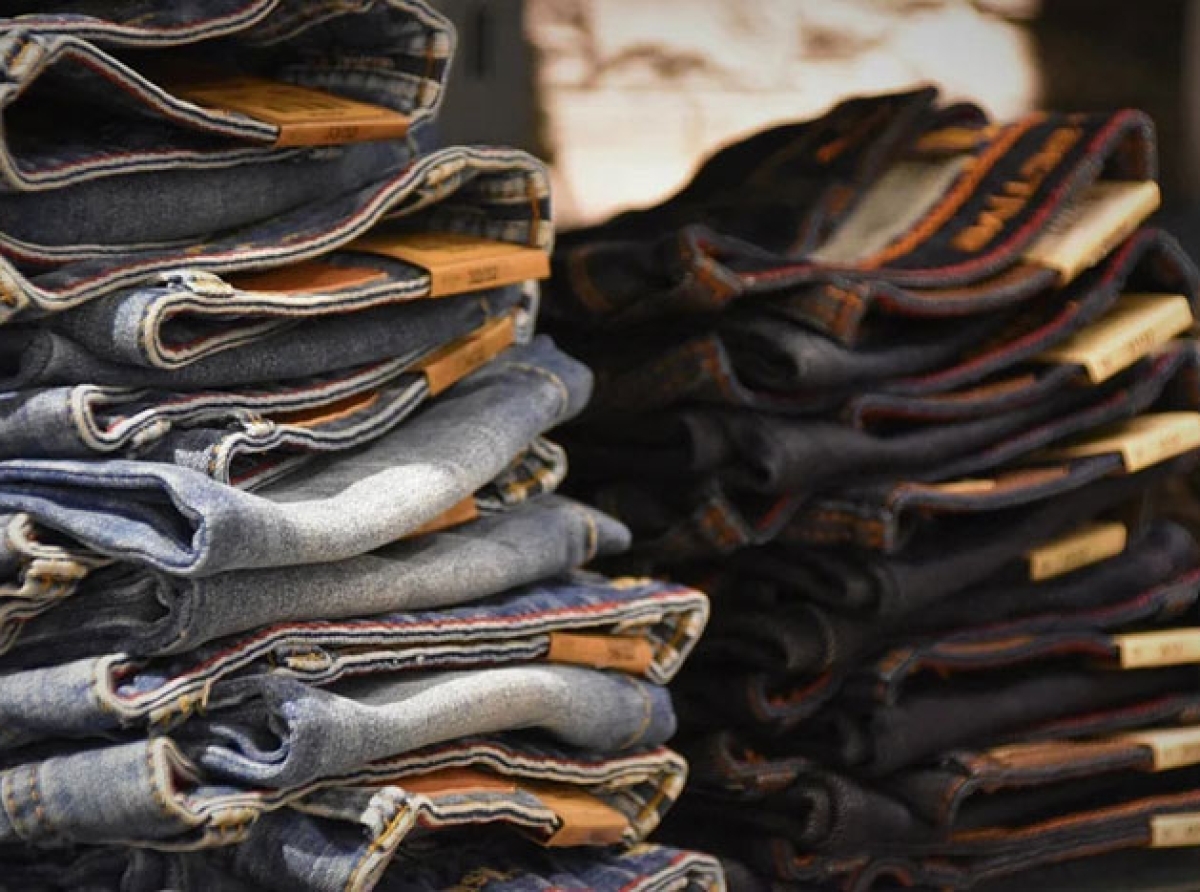10 May 2023, Mumbai
The jeanswear market is expected to experience substantial growth, with a projected value of USD 118.28 billion by 2030, up from USD 66.77 billion in 2021, representing a CAGR of 8.51% from 2023 to 2030.
This growth is attributed to several factors, including the popularity of jeans among younger consumers due to their comfort, durability, and versatility.
Genesis
Later developed in American mills, the latter was initially invented in England. The durable and rigid fabric known as denim is created from cotton or cotton blends using a two-toned weaving technique that produces a diagonal pattern from tightly packed fibers. The method described above, which places natural or white yarn in the weft (horizontal) position and dyed thread in the warp, gives jeans their distinctive blue appearance.
Story of cotton or a cotton blend
Clothing made of denim is often made of cotton or a cotton blend. Before being packed into bales, it is first gathered and sorted into fibers. Our denim fabric construction tutorial on Textile School explains that the fabric goes through a weaving process to create yarn dyed into indigo or other colors, depending on the design, to make a pair of jeans.
Sustainability angle
Water thirsty; As was previously said, cotton or cotton blends are used to create modern denim. So, since it's primarily made of natural fiber, how much influence may it have on the environment?
Despite being a raw material, cotton is a very thirsty crop and is not as sustainable as it may seem. A standard cotton pair of denim jeans can require more than 9,000 gallons of water to create, accounting for 69% of the water footprint of textile fiber manufacturing.
Manufacturers in developed economies are investing in creating the "perfect fit" jeans, which has driven product innovation in the market.
They are also incorporating synthetic fibers to offer stretchability, enhancing customer appeal. Moreover, rising living standards and increased consumer awareness of various jean styles, including boot cut, high rise, cropped, skinny, tapered, and regular fit, are contributing to market expansion.
A bird's eyeview
For decades, denim has been a staple in wardrobes around the world and an essential in the fashion industry. The global denim market is predicted to grow at a CAGR of over 6.5% between 2015 and 2020, increasing from $113 billion to $153 billion.
In India, the denim market is experiencing the fastest growth rate among apparel fabrics, with a consistent CAGR of 15% to 18% annually.
Due to high demand, the current installed capacity of nearly 1,200 million meters is expected to rise to 2,000 million meters in the next three to four years. India has a significant advantage in the global market, as it has access to all types of cotton and MMF fibers and attracts top global brands.
Industry experts predict that the denim share in international trade could achieve a CAGR of 10% over the next decade.
In terms of retail sales, the Indian denim wear market is forecasted to grow at a CAGR of 15% due to rising disposable incomes, a rapidly expanding retail sector, a westernization trend, a booming internet retailing sector, a young population with higher spending power, and a wide range of consumer segments that consider denim as comfortable and stylish attire of choice.
Potential unlimited
Despite robust growth in the industry in recent years, India's denim market has significant untapped potential. For most of the Indian youth, denim is not just casual wear but a fashion statement.
Nearly 85% of the market is dominated by men, with 10% contributed by the female segment and 5% by the kids segment.
The growth in the male segment of denim wear is quite significant, and it is no longer limited to urban centers but has gradually expanded to semi-urban and rural markets.
The increasing awareness of global fashion has led to the development of premium and super-premium categories of denim products with smaller base numbers. The Latin Americas and Asia are expected to lead the growth in the segment.
The demand for branded apparel is on the rise, propelling the growth of the jeans market. Additionally, the preference for sustainable denim clothing is increasing globally, presenting opportunities for jeanswear manufacturers to produce denim from recyclable materials, including plastic.
Changing paradigm
The market is witnessing a shift in consumer preferences towards distressed, cropped, and patched jeans, with trendy styles like cropped hems, boyfriend jeans, two-tone jeans, and skinny jeans gaining popularity, especially among the younger generation.
Decorative denim featuring patches, laces, and embroidery is also selling rapidly in the market.
The growing demand for fashionable apparel among the youth population is a key driver of market growth, with denim widely available in casual wear in a range of colors and shades.
Emerging E-commerce; The presence of apparel retail chains and the growth of e-commerce are expected to further boost market expansion. Changing lifestyles, coupled with rising disposable income, are fueling the demand for premium designer denim.
Furthermore, the demand for denim accessories such as bags and shoes is also increasing, creating additional growth opportunities for the jeanswear market.
Sum up
The jeanswear market is expected to experience significant growth in the coming years, driven by product innovation, changing consumer preferences, and the rise of sustainable fashion.
The market presents an array of opportunities for players to capitalize on, particularly in the areas of sustainability and fashion-forward designs.
.

























